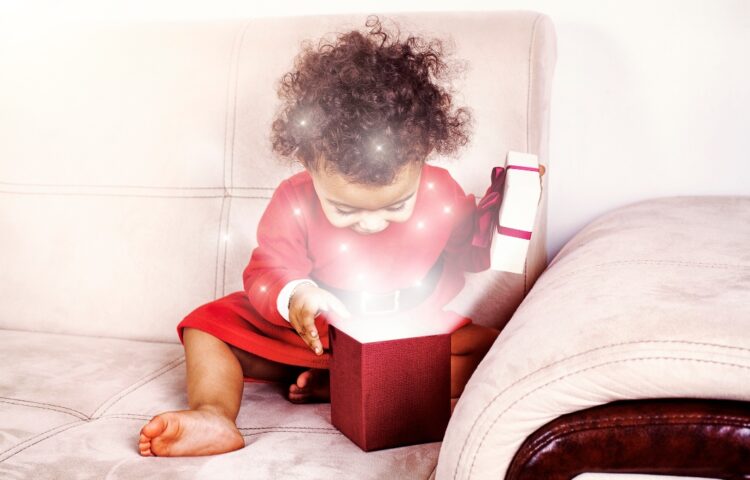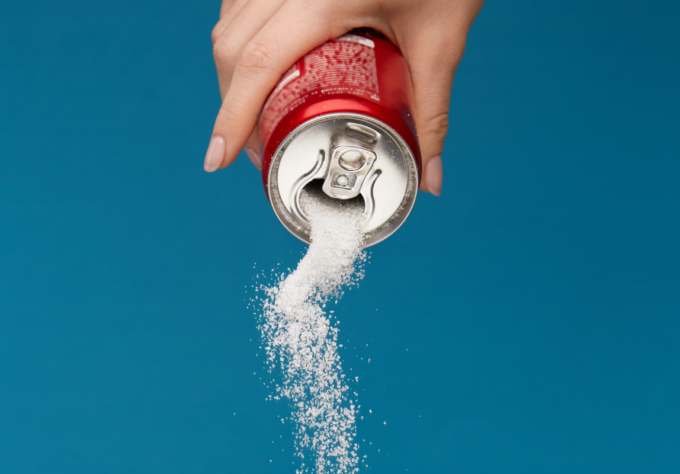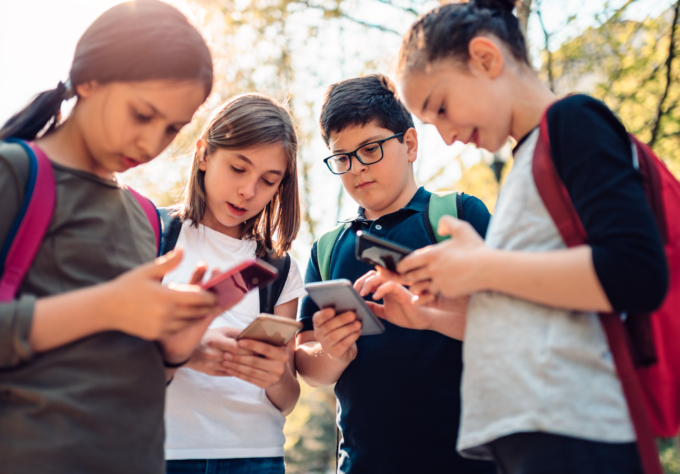Play is extremely important in children’s social, mental,physical and emotional development so choosing the right toys to give to them can be challenging. When giving the right toy to a child, think of the toys as learning tools that should match their age, help them develop social and motor skills, and be stimulating, safe and fun.
Choosing a gift that is both fun and educational can be difficult and will depend on what age and stage the child is in. Use this guide to help you find the perfect toys for the children in your life.
Toys for Baby (Age 0 to 12 Months)
During their first 12 months, babies are developing new motor skills, so as they grow, play becomes more coordinated and involved. At about four months, babies begin to reach for and grasp objects, like rattles. From six to seven months, they can transfer that rattle between their hands. And at around nine months, a newly developed pincer (thumb and second finger)grasp encourages babies to pick up small objects, like blocks or similar small baby toys.
Play in the first year of life is all about exploration. During this time, babies are developing their senses. They love to look at people and connect with their voices and faces. The best toys at this stage are those that stimulate a baby’s vision, hearing, touch, and even smell and taste. Babies want to reach and grab at toys, hold and shake them, make noise with them, and many times put the toys in their mouth. They are attracted to play-things they can listen to and look at, and they enjoy seeing (after about three months) bright primary colors like red, blue or yellow that have high contrast and simple design.
Everything is new for a baby at this stage, so introducing them to soft toys, textures and contrasts will help to stimulate their senses. For older babies (6-12 months), try toys that are visually stimulating and help to develop creativity and useful skills. Below are some toys that allow them to explore, improve their thinking skills, and develop language.
Interactive Activity Mats/Gyms
Interactivity mats, also known as play or activity gyms, encourage babies to reach up and play with toys that are dangling over their head, many of which are rattles and teethers that include stimulating and eye-catching mirrors and musical toys. A comfortable mat with lots of things to see, hear,feel and grasp, provides entertainment between naps, feedings and diaper changes. The best options are activity mats that grow with a baby, equipped with a special cushion to support tummy-time play and offering spots to move toys on the mat around as babies learns to roll, sit and crawl.
Books
Reading to babies helps develop their language and vocabulary early. The best types of books for infants are soft, cloth books or durable board books. These should have rounded edges and fabric for the baby to touch while they look at pictures and hear new words.
Toys with Mirrors
Since babies are discovering their own bodies, they love to see their reflection in a mirror. Some rattles have mirrors and there are also larger baby-safe mirrors that are surrounded by cloth.
Stacking Toys / Baby Blocks / Activity Tables
Toys that improve a baby’s hand-eye coordination are key.Playing with toys that have a variety of shapes and sizes will help them figure out the difference between round and square objects. This type of toy also helps them practice fine motor skills.
Other great options to consider:
- Mobiles
- Rattles
- Teethers
- Bath toys
- Sleep toys like plush animals
- Push and pull toys
- Xylophones
- Musical toys
- Play phones
- Pretend kitchenware
You’ll want to avoid gifting toys with strings or cords,small objects or toys with small parts that can be swallowed, stuffed animals with loosely sewn-on parts (eyes and buttons) and toys with sharp edges.Remember that babies should always be supervised when playing.
Toddlers (1-3 Years)
The best toys to give to a toddler encourage them to test out their skills and also offer creative play. From age one to three years,children have good control of their hands and fingers and enjoy activities like pulling, pushing, lugging, knocking things down, and emptying and filling things. Their imaginations are growing rapidly, as well as their language skills, and they love play-time that is all about make believe. A toddler’s curiosity means that he or she wants to touch and explore to become aware of how an object works.
Young toddlers will begin to know the differences in colors and shapes. So choose toys that are bright, colorful, and fun for little hands to hold. By two, most can use a crayon or marker, kick a ball, and build structures with more than four blocks. By three, they should be able to do simple puzzles and pedal a tricycle.
The best toddler toys encourage children to test skills while playing and provide the opportunity for repetition, so the little one can master new skills. Below are some gift ideas that will encourage toddlers to release their energy and improve their fine motor and thinking skills.
Sorting, Stacking, Nesting and Simple Puzzle Toys
Pegboard puzzles, stacking / nesting cups or blocks, and buckets with holes for different shaped blocks challenge a toddler’s hand-eye coordination and help develop their problem-solving skills.
Soft balls
Toddlers can have a ball with a ball! Whether they bounce,roll, catch or throw them – balls help with gross motor skills (involving larger movements), hand-eye coordination, and ease in using their hands (dexterity).
Mechanical toys
There are lots of mechanical toys to choose from for toddlers. Little ones will enjoy pop-up toys and boxes with knobs, buttons, and levers, which encourage fine motor skills and problem solving, while also learning cause-and-effect.
Role-play toys
Toddler’s imaginations are going wild, so play-kitchens,doctor’s kits, and golf sets make great gifts. Toys like these help them imitate adults, thus learning how the world works. Additionally, dolls and stuffed animals encourage pretend play and help with social and emotional development by teaching toddlers how to express emotions and care for something they love.
Other great toddler gift options to consider:
- Modeling clay
- Mechanical toys
- Blocks
- Picture books
- Musical toys
- Pop-up toys
- Stacking rings
- Shape sorters
- Simple puzzles
Children at this age still put things in their mouths, so avoid giving a toddler toys that are small (like marbles) or toys that have small parts like batteries or loose magnets.
Preschoolers (4-5 years)
Think of the preschooler in your life as a great creator…and the sky is the limit! For preschoolers, the world is a magical place without limits. Often, they’ll create a fantasy and expect adults to play along, which is crucial to kids’ development because it helps them work out fears, anxieties, hopes and dreams. Preschoolers are also learning new skills and tricks, and they’re beginning to learn the give-and-take of cooperation and sharing.
Try out some of these smart toys to give to preschoolers.
Arts and Crafts
Preschoolers’ fine motor skills are improving, so now they can hold crayons, draw pictures, and even use safety scissors to cut and paste.These activities help kids with coordination as well as encourage creativity and develop self-esteem. A good bet for arts and crafts are large crayons,pencils, paints, blunt-edge scissors and children’s glue.
Puzzles
To help a preschooler with coordination and dexterity, give hem a simple jigsaw puzzle. These toys also teach them about spatial relationships (where things are in relation to other things) and logical thinking.
Ride-On Toys
Kids this age will absolutely love a toy they can ride, but make sure these go no faster than 2.5 miles per hour. Tricycles or bicycles with training wheels may also be a good option. Remember that preschoolers need adult supervision when using any ride-on toys, and they’ll also need a helmet. See the best choice in kid’s scooters according to Best Products Pro (some of them may be suitable for younger children).
Below are some more gift ideas for preschoolers:
- Basic board games
- Dress-up clothes, accessories and props to assist with pretend play
- Modeling clay
- Books
- Basic musical instruments
- Outdoor toys (sandbox, pail, shovel)
- Puppet theaters and puppets
Tip: Preschoolers have likely found a favorite television or digital show. A great toy gift option can tie back to their entertainment interests.
Big Kids (6 and Older)
Kids who have started elementary school have developed lots of physical abilities like large and fine motor skills, and they are still refining them. It’s usually during this time that children are learning to ride bicycles and scooters so if you fancy getting them something a little more futuristic, check out the best hoverboard for kids. This age is also when kids really begin developing their talents and interests. The big kid in your life may love reading or is learning to play an instrument. Friends and peers have become incredibly important, so toys they can share with friends are sure to please.
Card and Board Games
When kids are growing up, it’s a great time to establish family game night. A deck of cards or board games like chess or checkers teach kids about strategy, turn-taking, managing rules and fair play. These gifts also encourage cooperation and help children learn to manage the emotions that come with winning and losing.
Musical Instruments
When children learn to play an instrument, it encourages listening and fine motor skills, helps build attention skills and encourages creativity.
Science Toys
Kids age six and up are very curious, want to explore,invent, create and conquer. Good options to do this are chemistry sets,binoculars, telescopes, or other toys that help with discovery and problem-solving. These toys also help improve math and science skills, while also developing imagination.
For Teenagers
If you’re feeling limited in buying a gift for an even-older kid or a preteen / teenager, don’t worry – there are still lots of hot, new gifts that will appeal to them while also being educational and creative. You can take one of the above categories and just increase the age limit, for example, the card and board games you can begin looking at games made by Wizards of the Coast or even Monopoly rather than checkers. This is just one suggestion but there are many other gift ideas that you may want to consider:
- Electric Scooters – a great option if they love riding on their bike
- Karaoke Machines – for the kid in your life who just can’t stop singing
- Drones – you can find these over at https://www.drdrone.ca/
- LEGO Sets – perfect for the creatives who are going to design big things
- Movie Memorabilia – this can be anything from toys to clothing
- Robots – what kid doesn’t love robots?!
Keep It Simple!
Keep this in mind: simpler gifts are probably better, especially when it comes to younger children.
In a recent report published by the American Academy of Pediatrics, pediatricians said that heavy use of electronic media (like iPads and mobile devices) could delay a child’s speech and language development, and lessen their physical playtime, which could cause obesity. They suggest no screen time for children up to age two, and less than one hour daily for ages wo and older. So skip the high-tech items for little ones; the toys you give should encourage activity and playtime with parents.
For more about the right toys to give to kids of every age, learn more about their developmental stages with these factsheets.



